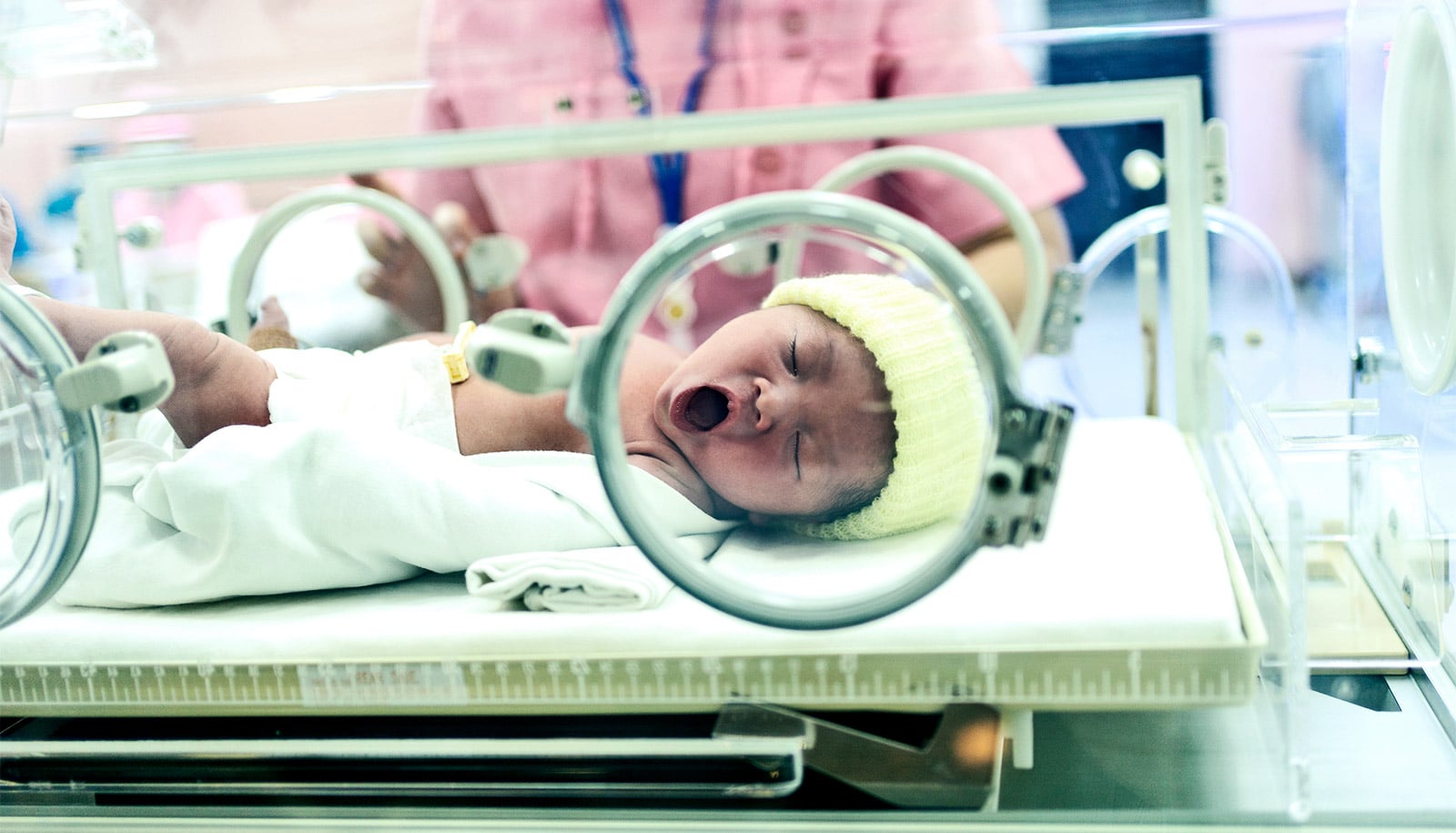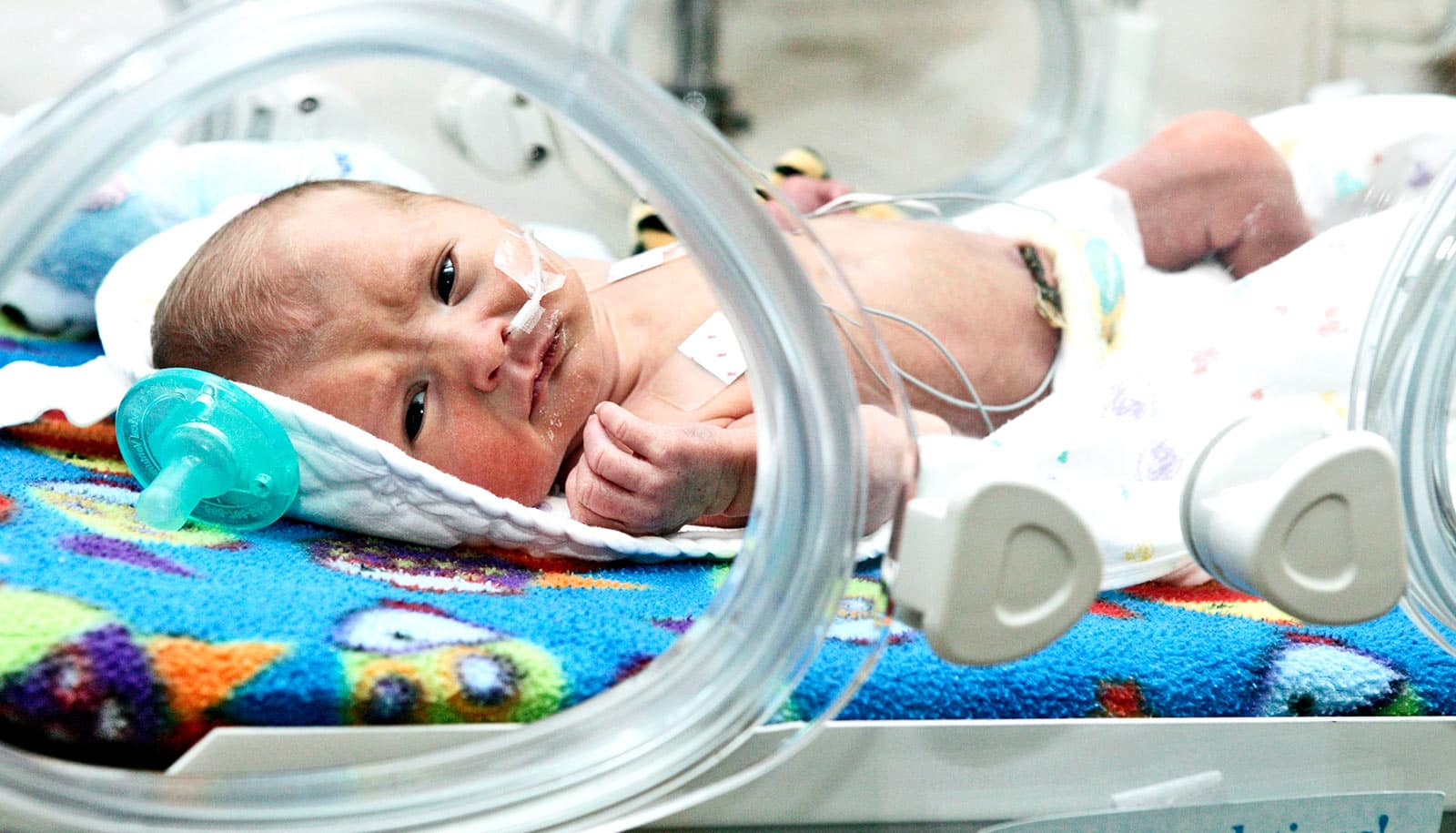Using machine learning to sift through the electronic health records of both mothers and newborns can predict how premature babies will fare in their first two months of life, researchers report.
The new method, reported in the journal Science Translational Medicine, allows physicians to classify, at or before birth, which infants are likely to develop complications of prematurity.
“Preterm birth is the single largest cause of death in children under age 5 worldwide.”
“This is a new way of thinking about preterm birth, placing the focus on individual health factors of the newborns rather than looking only at how early they are born,” says senior author Nima Aghaeepour, an associate professor of anesthesiology, perioperative and pain medicine and of pediatrics Stanford University School of Medicine.
Traditionally defined as birth occurring at least three weeks early, premature birth is linked to complications in babies’ lungs, brains, vision, hearing, and digestive system. Although earlier births generally carry higher risks, the timing of birth predicts only approximately how a specific infant will fare. Some infants who are born quite early develop no complications, while others born at the same stage of pregnancy become very ill or die.
“Preterm birth is the single largest cause of death in children under age 5 worldwide, and we haven’t had good solutions,” Aghaeepour says. “By focusing our research on predicting the health of these babies, we can optimize their care.”
Many complications of prematurity take days or weeks after birth to emerge, causing substantial damage to newborns’ health in the meantime. Knowing which infants are at risk could enable preventive measures.
“We look mainly at the baby to make treatment decisions in neonatology, but we are finding that we can get valuable information from the maternal health record, really homing in on how individual babies’ trajectories have been shaped by exposure to their specific maternal environment,” says coauthor David Stevenson, a neonatologist at Lucile Packard Children’s Hospital Stanford, professor of pediatrics, and director of the March of Dimes Prematurity Research Center at the Stanford School of Medicine.
“This is a move toward precision medicine for babies,” he adds.
Predicting health of premature babies
The researchers linked electronic medical records for mothers at Stanford Health Care and for their babies at Stanford Medicine Children’s Health, covering 32,354 live births that occurred between 2014 and 2020.
The mothers’ medical records included information from the pregnancy and, for those who had been patients at Stanford Medicine prior to pregnancy, health data from before they became pregnant. The infants’ records started with information recorded at birth, including weight; blood tests; and Apgar score, which is assessed in the delivery room one and five minutes after birth. The Apgar score incorporates factors such as the infant’s pulse, breathing, and muscle tone.
Using a machine learning algorithm called a long short-term memory neural network, the researchers built a mathematical model from the medical records and tested whether it could predict 24 possible health outcomes for infants up to two months after birth.
“I was surprised by how much predictive power we have before the baby is even born, and right at birth.”
“There is a computational challenge in using electronic health records because they are longitudinal and contain a large amount of data from each patient,” Aghaeepour says. “A long short-term memory neural network operates similarly to a person reading a book. When we’re reading, we don’t remember every word, but we remember the key concepts, read the next part, add more key concepts and carry that forward. The algorithm doesn’t memorize the entire electronic health record of every patient, but it can remember key concepts and carry those forward to the point where we make a prediction.”
At the time of birth, the machine learning model provided strong predictions for which infants would develop various conditions including bronchopulmonary dysplasia, a type of chronic lung disease; retinopathy of prematurity, a problem with the retina that can cause vision loss or blindness; anemia of prematurity; and necrotizing enterocolitis, a severe gastrointestinal complication often not diagnosed until weeks after birth, by which time interventions are complex and associated with poor outcomes.
The model also gave strong predictions a week before birth for multiple outcomes including mortality and retinopathy of prematurity, which can cause vision loss or blindness, as well as moderately strong predictions for 11 other conditions.
“I was surprised by how much predictive power we have before the baby is even born, and right at birth,” Aghaeepour says. “I did not expect to see that. I had thought accuracy would come several days after birth, once we had collected data from the baby.”
Some complications were not reliably predicted by the model, such as which infants would develop candidiasis, or yeast infections; polycythemia, a high concentration of red cells in the blood; or meconium aspiration syndrome, in which the infant inhales meconium, a sticky substance expelled from the fetal bowel, during birth.
The researchers validated that the strength of the predictions did not change over the years (comparing births from 2014 to 2018 with those from 2019 to 2020); they also validated some of the findings using an independent group of 12,258 mother-baby pairs from UC San Francisco.
The model’s predictions at birth provided more accurate information than currently used risk assessment tools such as Apgar scores and the National Institute of Child Health and Human Development risk score. These scores consider only the condition of the baby at birth and do not incorporate any information from the mother’s medical history, the researchers note. However, additional studies in more diverse populations are needed before this machine-learning tool is ready to replace existing risk calculators at the bedside, the researchers say.
Mothers and infant health
The model revealed unexpected connections between certain health or social conditions in mothers and the health of their infants, according to the researchers.
For instance, mothers with anemia—a common pregnancy complication— were more likely to have newborns with anemia. These infants were also more likely to develop the bowel complication necrotizing enterocolitis, the researchers found.
“We need to explore what linkages explain these relationships at a biological level, as these might offer clues to how certain conditions occur,” Stevenson says. “That will allow us to intervene better to help those kids.”
The new algorithm was also able to link specific types of socioeconomic disadvantage in mothers with certain prematurity complications in their babies.
“If a mother was homeless, we found that the health impact on the baby would be different from the impact of incarceration, whereas under traditional paradigms both of these socioeconomic factors might be thought to have similar effects on prematurity risk,” Aghaeepour says.
Predictions from the model could help neonatologists better identify which patients will benefit from existing protocols to prevent birth complications, Stevenson says. For example, newborns who experience lack of oxygen during birth can now receive cooling protocols in early life, which lower their body temperature for a few days to prevent brain injury. Predictive scores may help identify additional infants who could be helped by cooling, he says.
The work needs to be replicated in larger, more diverse patient populations and folded together with other Stanford Medicine research that characterizes pregnancies according to thousands of biomarkers that change during gestation, the researchers say.
Postdoctoral scholar Davide De Francesco and Jonathan Reiss, an instructor in pediatrics, are the study’s lead authors. Scientists from UC San Francisco contributed to the study.
The National Institutes of Health, the Burroughs Welcome Fund, the American Heart Association, the March of Dimes, the Robertson Foundation, the Alfred E. Mann Foundation, and the National Science Foundation funded the work.
Source: Stanford University



